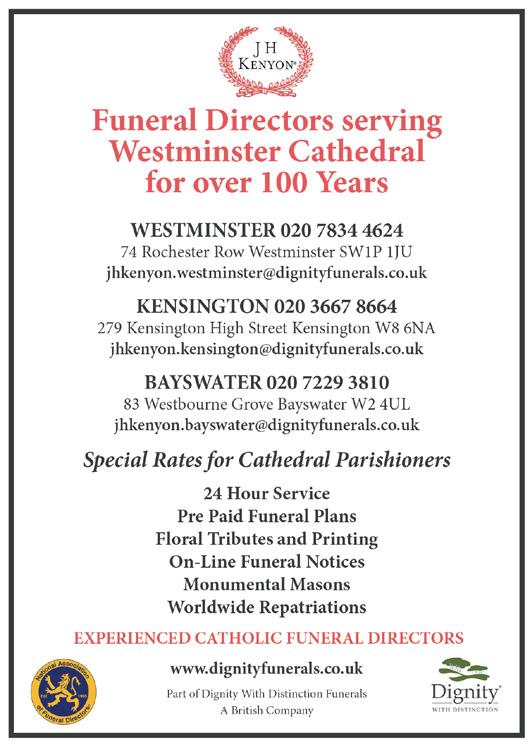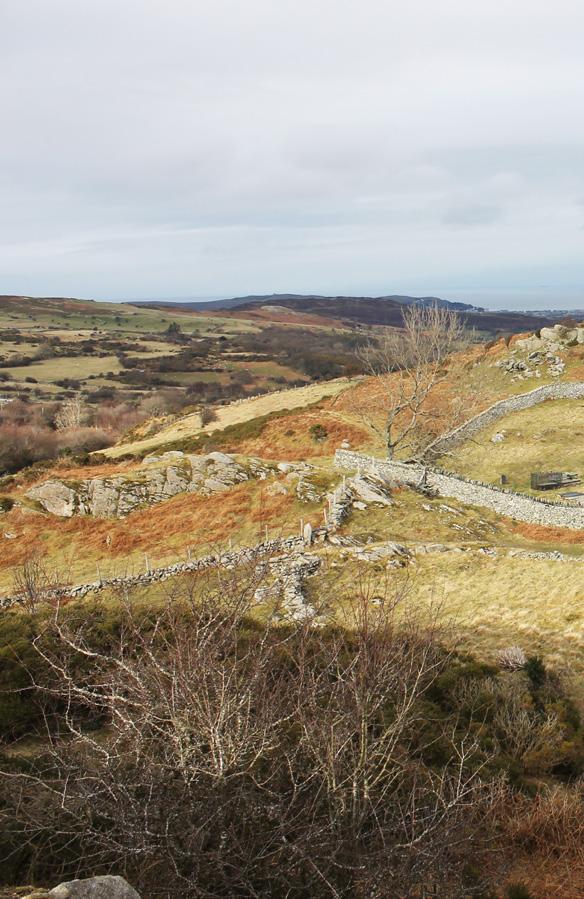
5 minute read
On St Joseph and Fathers by Dr Stuart Blackie KCHS 12
from Oremus October 2021
aid from the state. Pregnant girls, of course, go to the front of the queue for social housing allocation and this serves to illustrate the Law of Unintended Consequences. The biggest single cause of poverty since 1970 has been the dissolution of both the nuclear and extended family. It is a heart-breaking, self-inflicted wound, but no liberal will so much as mention it as a causal factor in poverty, still less accept – as every single longitudinal study has shown – that single parenthood significantly raises the likelihood of sub-optimal outcomes for the children in terms of mental health, employment, drug use, criminality and earning power. Though it is reasonable and we are still enjoined not to stigmatise single mothers, we should make clear that single parenthood in the long run will, in most cases, lead to a poor outcome, for the mothers, for the children and for the families.
This Covid-19 pandemic has forcefully demonstrated that our lives are woven together and sustained by ordinary people - people often overlooked – men and women who do not appear in newspaper and magazine headlines or on the latest television show. Yet these people are surely shaping the decisive events of our history. Of course we appreciate the efforts of front line doctors and nurses. However, most of us have more direct and personal cause to thank the men and women working to provide and maintain essential services such as the storekeepers and supermarket workers, cleaning personnel, transport and delivery workers, care workers and volunteers.
Each of us can discover Joseph – the man who goes unnoticed, a daily discreet and hidden presence – a support and a guide in times of trouble. Remember, some of the greatest saints in heaven are unknown except to God. Every saint has a past and every sinner has a future – if he is prepared to grasp the opportunities for improvement which life presents. Joseph is described as a ‘just man’ – not ‘just a man’. It is not too late, but the longer we fail to deal with the crisis of fatherhood, the more difficult it will be to rectify the situation. I think Pope Francis has made an inspired choice for 2021. I wish his predecessors had done the same thing decades ago. However, since in these days in this country, a certain prejudice against Christianity – and particularly Catholicism – is the last and only socially permissible prejudice you can exhibit openly with little risk of retribution, it must fall to our politicians, who are in a position to amend the relevant laws and statutes, to change the political climate and rebalance the scales of rights and responsibilities. If successfully enacted, this will not, of course, cure all social ills and the results may only become apparent with time – probably measured in generations. However, it will be a step in the right direction and, as one Oriental philosopher pointed out, the longest journey begins with the first step.
St Joseph, pray for us.
Nazareth, home of the Holy Family of Jesus, Mary and Joseph, in 2013

Churches in Parks
Eddie Tulasiewicz
The UK’s National Parks are best known for their incredible landscapes and wildlife, but also contain some of the UK's most beautiful churches and chapels. The National Churches Trust, the UK’s church buildings charity, is now making it easy for anyone visiting a National Park also to discover these amazing heritage buildings. Over 200 churches and chapels found in the UK’s 15 National Parks are featured in a new online visitor’s guide on the Trust's ExploreChurches website. The guide includes tips as to which churches to visit in each park and accompanying photography to whet the appetite of visitors.
Bill Bryson’s favourites Amongst those listed are three which are the favourites of writer Bill Bryson, himself a Vice-President of the National Churches Trust: • St Michael the Archangel, Kirkby in Malhamdale in the Yorkshire Dales National Park – believed to date from the 7th century. • St Pancras, Widecombe in the Moor, in the Dartmoor National Park – with its tall tower it is locally known as the Cathedral of the Moor. • St Andrew, Alfreston, standing beside the Tye in the spectacular South Downs National Park, known as the Cathedral of the South Downs and close to the delightful Cuckmere river. He comments: ‘It is impossible to overstate the importance of churches to this country. Nothing else in the built environment has the emotional and spiritual resonance, the architectural distinction, the ancient, reassuring solidity of a parish church. To me, they are the physical embodiment of all that is best and most enduring in Britain. So, when you visit a National Park, why not discover some beautiful churches in our most breathtaking and treasured landscapes?’ Other notable churches to visit include: • Brecon Beacons National Park – The medieval pilgrim church of St Issui, Patricio, Powys in the Brecon Beacons National Park, where you can come face to face with a firebreathing dragon. • Broads National Park – For literary lovers, discover the church that Charles Dickens used as the scene for the opening chapters of David Copperfield. St Mary the Virgin, Blundeston is much as Dickens would have known it. • Cairngorms National Park – From 1848, Crathie Kirk, Aberdeenshire, has been a place of worship for Queen Victoria and every British monarch since. It is located at the heart of the Cairngorms National Park.
© Llywelyn2000

Llangelynnin church in Snowdonia
• Dartmoor National Park – An iconic landmark, St Michael de Rupe, Brentor, in Devon's Dartmoor National Park, was founded in 1130 by the local landowner Robert Giffard and is the highest working church in England. Even when thick moorland fogs descend, this is an eerily beautiful place. • Exmoor National Park – Considered to be the smallest in England, the atmospheric St Beuno, Culbone in Exmoor is lit simply by candlelight, creating its own particular experience. • Lake District National Park – St Oswald, Grasmere, Cumbria in the Lake District National Park, is linked forever with the UK’s great romantic poet William Wordsworth, who is buried in the churchyard. • Loch Lomond and The Trossachs National Park – The tin tabernacle at St Fillan, Killin in Loch Lomond & The Trossachs was built in 1876 by the Earl of Breadalbane for private use by shooting parties. The church earned the name 'Grouse Church' among locals. • New Forest National Park – St Michael & All Angels, Lyndhurst, Hampshire, in the New Forest National Park, is famous for stained glass by 19th century artists including Edward Burne-Jones, Dante Gabriel Rossetti, and William Morris.










